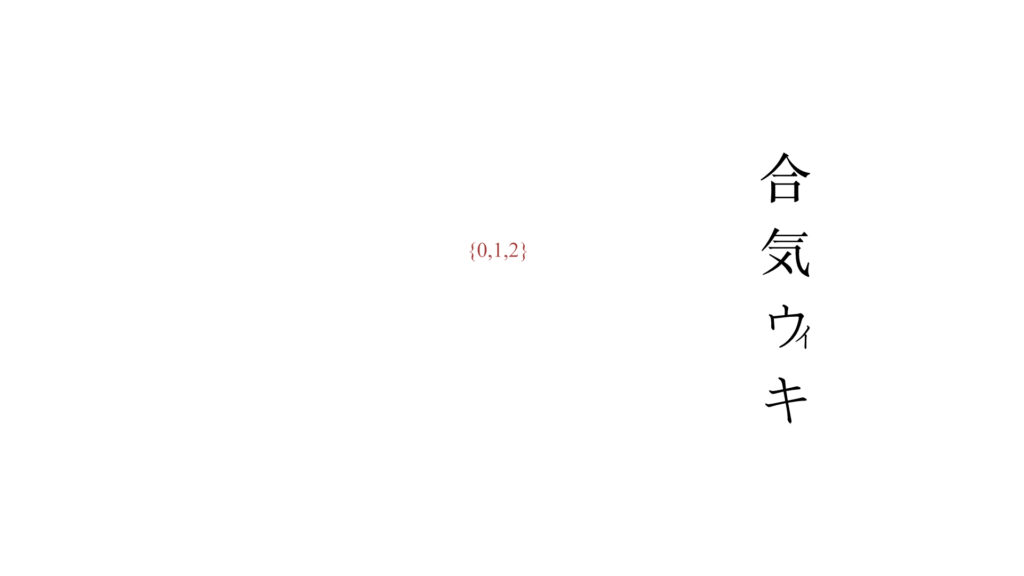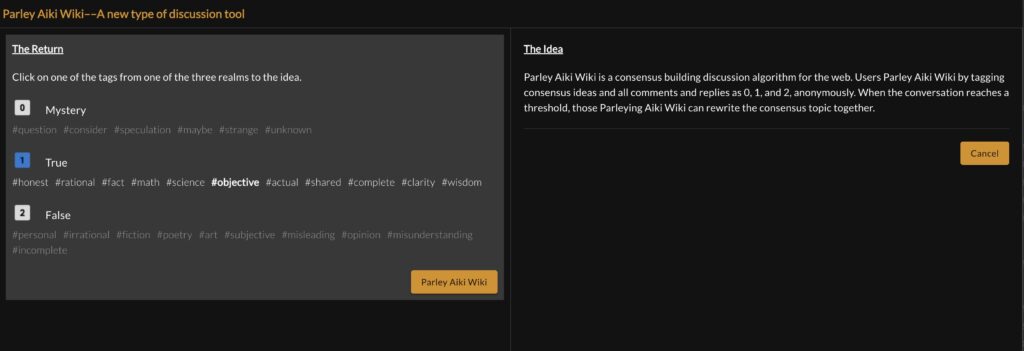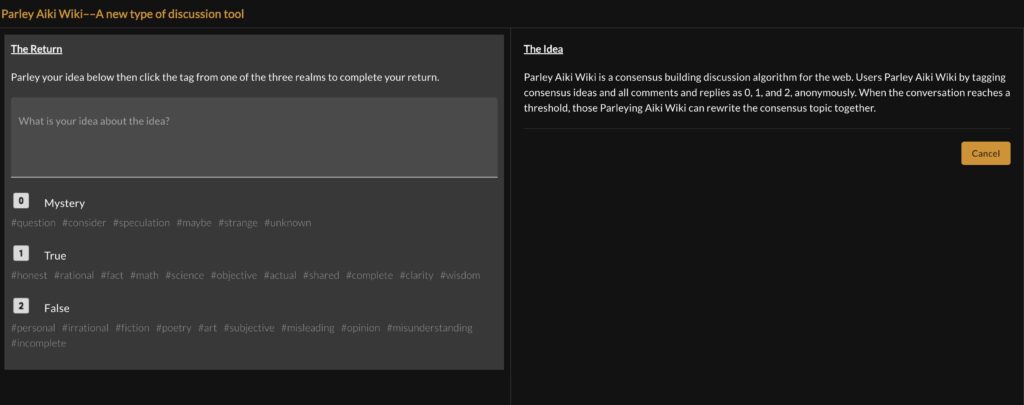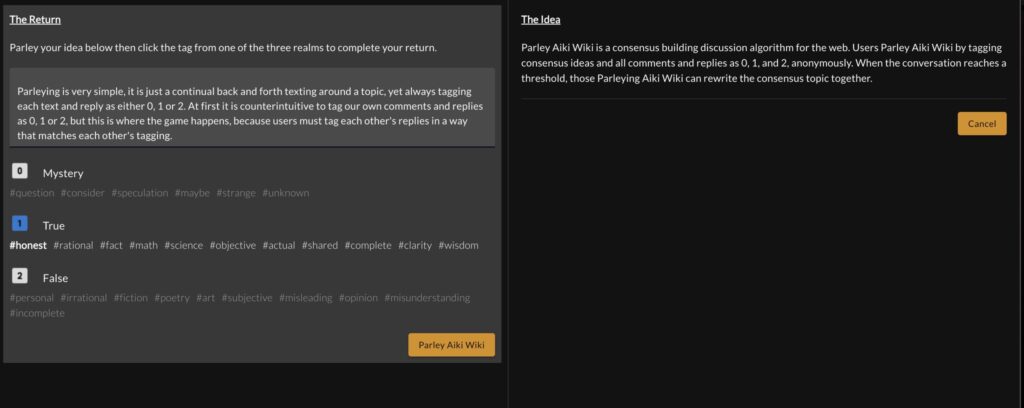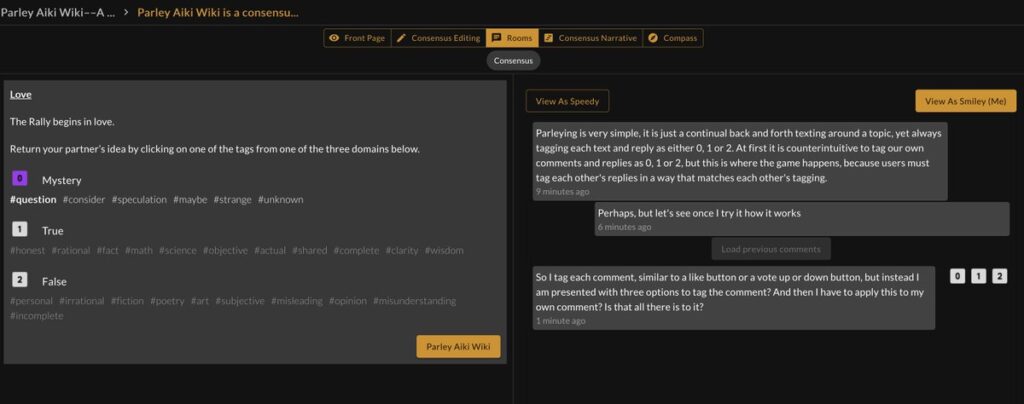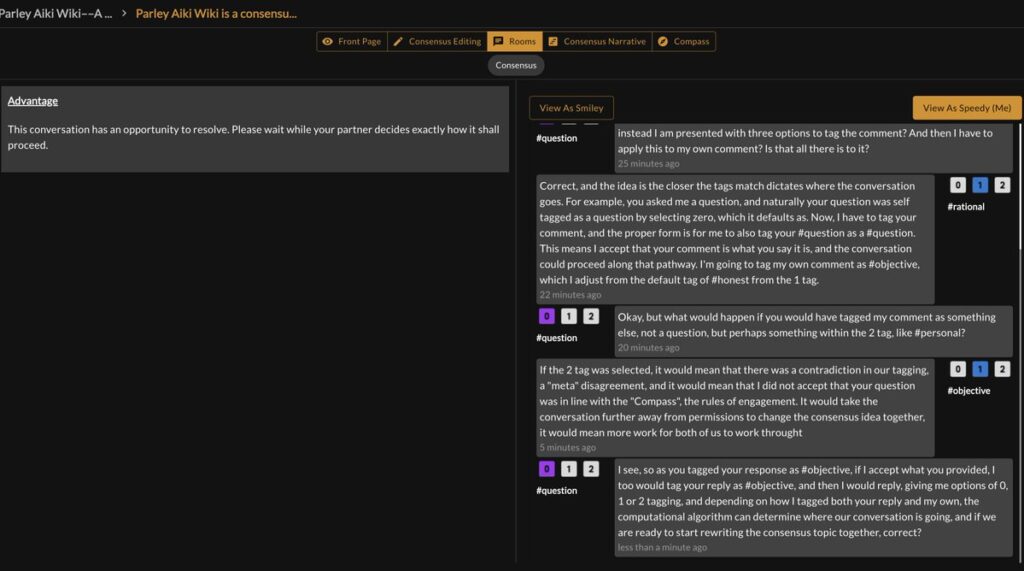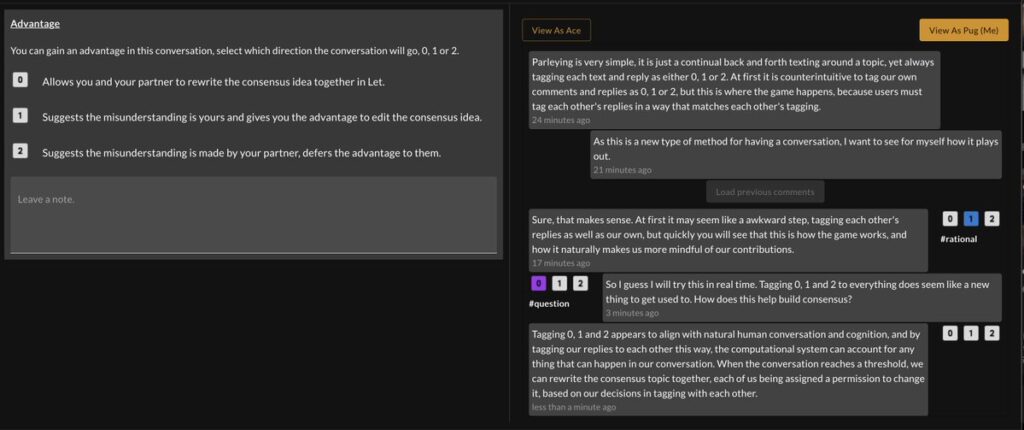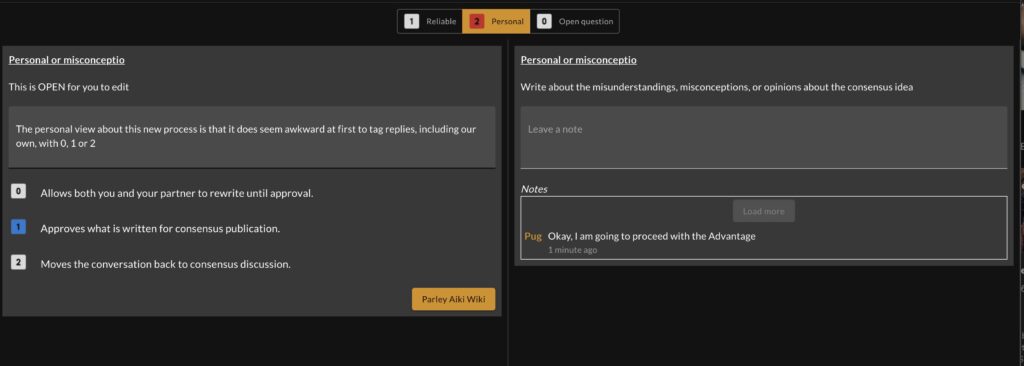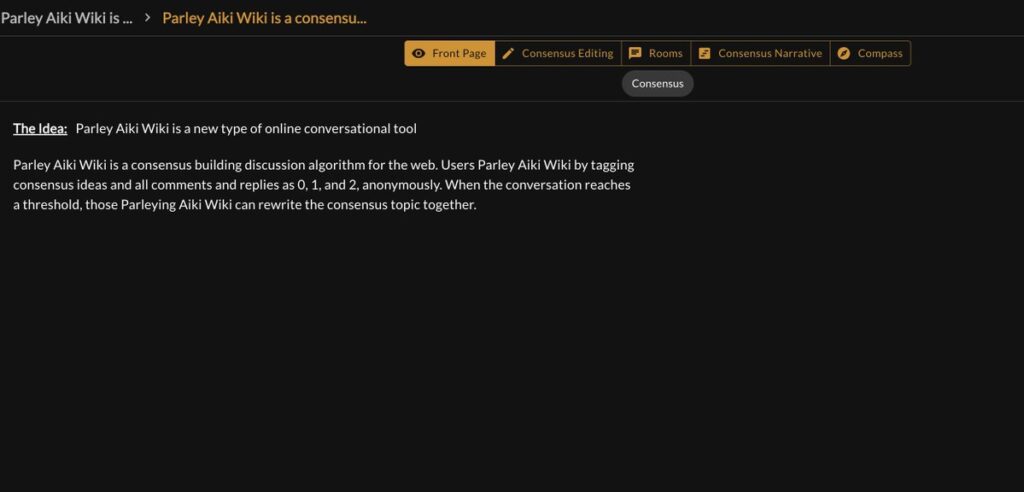Rome Viharo
©2024 9×3 Narrative Logic LLC
Abstract
This paper presents Conversational Game Theory (CGT) as a novel framework for collaborative intelligence. CGT integrates cognitive, computational, and psychological systems into a seamless meta-system designed to foster conflict resolution, productive disagreement, and win-win outcomes.
Through recursive feedback loops and mechanism design favoring collaboration, CGT aligns individual cognition with group interaction to create emergent consensus. A defining feature of CGT is its ability to produce actionable, publishable artifacts—such as articles, contracts, laws, and news reports—ensuring collaborative conversations translate into real-world impact.
This paper explores CGT’s implications for AI-human collaboration, multi-agent systems, governance, social media platforms, and AGI development, presenting CGT as a model for scalable collaborative intelligence that evolves through recursive interaction and consensus-building.
Introduction
- The Challenge: Existing systems for decision-making, conflict resolution, and collaboration often struggle with binary choices or competitive dynamics.
- The Solution: CGT offers a new paradigm that integrates cognitive, computational, and psychological systems into a recursive meta-system where collaboration is the dominant strategy.
- Purpose of the Paper: To define the framework of CGT, outline its components, explore its ability to produce actionable artifacts, and demonstrate its applications across industries.
Core Components of Conversational Game Theory
Cognitive System: Thought and Reflection
- Definition: The internal processes of individual agents, including logical reasoning, reflection, and perspective-shifting.
- Dynamics:
- Interaction between subjective (your/my) and objective (our) perspectives.
- Recursive cognitive loops refine understanding through reflection and response.
- Alignment with narrative arcs: Act 1 (framing), Act 2 (engagement), and Act 3 (consensus).
Computational System: Structured Interaction and Tracking
- Definition: The system that organizes interactions, manages conversation state, and distributes permissions for change.
- Dynamics:
- Stateful memory tracks inputs, contradictions, and resolutions.
- Act structure guides the conversation through phases of framing, engagement, and synthesis.
- Permissions are granted to collaborative agents, enabling them to shape the system and create artifacts.
Psychological System: Behavioral Dynamics
- Definition: The emotional or behavioral patterns influencing engagement (collaboration vs. competition).
- Dynamics:
- Collaborative behavior is rewarded with permissions to influence the system.
- Competitive behavior results in reduced influence.
- The system encourages competitive players to adopt collaboration to remain relevant.
Mechanism Design: Collaboration as the Dominant Strategy
- Collaborative Incentives: Permissions to change the system are granted based on collaborative behavior.
- Managing Competition: Competitive players are either nudged toward collaboration or excluded from influencing the conversation.
- Consensus Power: The most collaborative participants gain consensus power to shape the outcomes and artifacts.
Recursive Feedback Loops Across Systems
- Cognitive-Computational Feedback: Players reflect internally and contribute externally, feeding recursive insights back into their cognitive processes.
- Behavioral Feedback: Behavioral patterns are influenced by system rules, fostering self-regulation toward collaboration.
- Emergent Dynamics: Recursive feedback loops create unpredictable outcomes, generating insights that evolve the conversation and system artifacts.
Creating Actionable Artifacts Through Consensus
A defining feature of CGT is its ability to generate real-world artifacts based on collaborative consensus.
Types of Artifacts
- Articles: Summarizing insights and consensus points for publication.
- Blockchain: Publish transparent immutable smart contracts or distribute funds
- Contracts and Agreements: Reflecting collaborative decisions among stakeholders.
- Laws and Policies: Emerging from multi-agent consensus for governance.
- News Reports: Balanced, multi-perspective summaries of key developments.
Impact of Artifacts
- These artifacts are actionable—ready for implementation, publication, or governance.
- The process of creating these outputs ensures that consensus conversations result in tangible outcomes, reinforcing the value of collaboration.
Applications of CGT
AI and Human Collaboration
- Training AI Agents: AI agents learn to engage collaboratively, building trust and alignment with human participants.
- Improving LLMs: CGT’s collaborative structure reduces hallucinations in large language models by reinforcing logical coherence.
Governance and Legal Systems
- Generating Policies and Contracts: Stakeholders collaboratively create legally binding agreements through CGT interactions.
- Consensus-Driven Governance: Laws and policies reflect the consensus of diverse agents, ensuring inclusive governance.
Social Media and Public Discourse
- Filtering Toxicity: Collaborative behavior is rewarded, and divisive actions lose influence.
- Balanced Journalism: CGT-generated news reports reflect multiple perspectives, ensuring unbiased reporting.
Multi-Agent Systems and AGI Development
- Collective Intelligence Systems: CGT fosters adaptive, emergent behavior in multi-agent networks.
- Path to AGI: By aligning cognitive, computational, and behavioral systems, CGT offers a framework for AGI development through collaborative recursion.
Key Features and Innovations
Generating Actionable Artifacts
- CGT’s recursive process ensures that conversations result in tangible outputs, ready for publication or action.
Adaptive and Self-Regulating System
- CGT functions as a self-correcting system, continuously evolving through recursive feedback.
Filtering Non-Collaborative Behavior
- Competitive or deceptive actions are naturally filtered out, ensuring that only collaborative behavior shapes the system.
Narrative Structure in System Logic
- The conversation aligns with natural cognitive flow through structured acts, enhancing the ease of consensus-building.
Comparison with Related Frameworks
Cybernetics and Systems Theory
- Overlap: Feedback loops and adaptive behavior.
- Difference: CGT emphasizes collaborative intelligence over control systems.
Game Theory
- Overlap: Strategic interaction between agents.
- Difference: CGT prioritizes collaboration over competition and outputs actionable artifacts.
Neural Networks and Collective Intelligence
- Overlap: Multi-layered feedback and emergent patterns.
- Difference: CGT integrates subjective, cognitive, and behavioral dynamics to produce structured artifacts.
Conclusion: A New Paradigm for Collaborative Intelligence
- Summary: CGT integrates cognitive, computational, and behavioral systems into a meta-system that produces actionable outputs.
- Implications: CGT offers applications in AI-human collaboration, governance, social platforms, and AGI development.
- The Path to AGI: Through recursive collaboration, CGT lays the foundation for a new form of intelligence that evolves through human and machine interaction.
